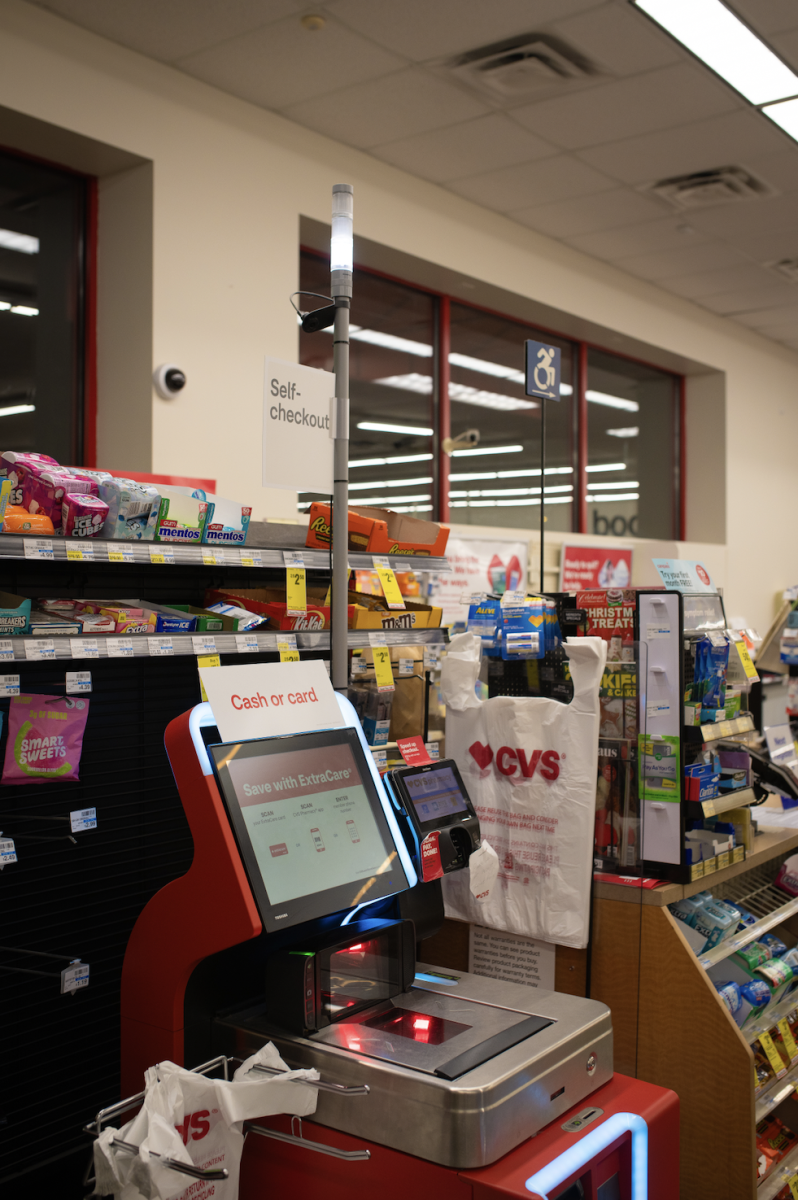Many supermarkets across the United States have started to rethink their self-checkout strategies after shoplifting continues to rise.
Self-checkout has been growing in popularity in the U.S. since the early 2000s, as they help cut out company labor expenses by having the customers do the work of checking themselves out.
With the rise of COVID-19, self-checkout grew even more prominent, as it offered customers a non-contact form of checkout.
However, customers have found ways to exploit self-checkout to shoplift in multiple ways. Methods of shoplifting include swapping barcodes with a cheaper product, pretending to scan an item and placing it into their bags, scanning items and not paying at the end or having a fake barcode on their wrist and scanning that barcode instead of the item’s original barcode.
“Self-checkout is my preferred way of checking out at the store,” said Michael Pimentel, a junior marketing major. “I don’t purposely not scan items, but with employees not paying attention or stepping away for a moment, I can see how it can be easy for people to take advantage of the system and sneak some items into their bags.”
Adrian Beck, a professor from the University of Leicester, conducted a study in 2018 regarding self-checkout theft. The data was collected from 13 retail stores and two self-checkout technology providers.
140 million scan-and-go transactions were reported, and roughly 486,000 items were not scanned throughout the study. Amid shoplifting growing, Walmart announced that they have lost approximately $3 billion.
States such as New Mexico and Delaware have removed self-checkout, and Wegmans has removed the pay option on their mobile app.
Costco has also upped its self-checkout security by stationing more employees in the self-checkout area and has cracked down on theft and nonmembers using a Costco card that does not belong to them to shop.
Self-checkout registers rely highly on an honor system with their customers, but with less human presence at the register, it makes it easier for customers to go against that honor code. A study found that retail stores in the United States, Britain, and other European countries lose 4% of their profit because of self-checkout lanes and apps.
“I know people who have taken advantage of self-checkout,” said Cole Lochstampfor, a management information systems, or MIS, major. “I won’t name names, but I feel self-checkout can tempt people into feeling like they can get away with shoplifting because you feel less monitored.”
To combat shoplifting, stores have installed cameras at self-checkout registers and notify employees whenever an item is reported as not scanned. Another method stores use is having an employee check receipts at the exit or having an employee stationed at the self-checkout area to discourage customers from shoplifting.
“It is crazy how places like Walmart and other supermarkets lose out on that much money annually,” said Jared Carter, a junior accounting major. “I find it hard to sympathize with them, considering how much money they make despite their losses. It probably feels like pocket change to them.”


